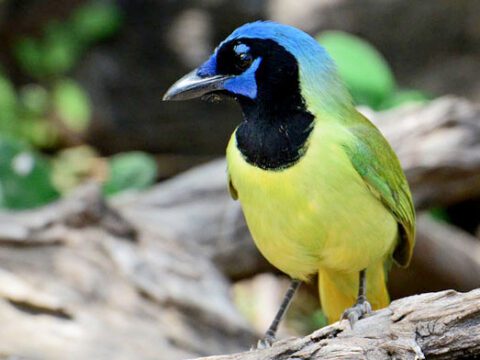Birding the Drake Passage From Tierra del Fuego to Antarctica
Story and photograph by Brian Sullivan
July 15, 2010

You know you’re having a great trip when you find yourself leaving a penguin colony—and the birding is about to get better. That was the scene in January 2009, when I served as a guest leader on a Victor Emanuel Nature Tours cruise to Antarctica.
After nearly a month of island-hopping along the Antarctic Peninsula, we headed 600 miles north for Ushuaia, Argentina. We were about to cross the infamous Drake Passage, the nightmare of sailors, where bitter winds howl through 20 degrees of latitude—the Furious Fifties and the Screaming Sixties.
The Drake Passage offers birders a glimpse into the brutal life of pelagic birds, and their ineffable poise in meeting the challenge. We can see more species in other waters (the waters off my home, in Monterey, California, can top the Drake Passage on a good day), but it’s unrivaled for witnessing seabirds in their element. To watch the great albatrosses of the southern oceans winging over massive swells in winds that can knock you off your feet is something not easily forgotten.
As soon as we left the protection of the South Shetland Islands, the ocean got rough. In the shallow waters heading west, arriving open-ocean swells were jacking up, mercilessly rolling our 300-foot vessel side to side. More than one person left the dining hall in a hurry, and more than one plate slid off the table and crashed on the floor. Extra seasickness bags had been thoughtfully placed every few feet along the rails. We were heading into the Drake.
I was launched out of bed and onto the floor more than once that night. After fitful sleep, I was on deck at 4:00 a.m. Already dozens of White-chinned Petrels and a few Wandering Albatrosses hung behind the ship as we plowed through 50-foot swells on our way north.
The sea was roiling. Mountains of water blocked out the horizon in all directions, and Wandering and Royal albatrosses arced high above with sturdy grace. These are solidly built birds with 12-foot wingspans—some of the largest birds on earth. They seem at home here, and somehow fit this enormous ocean world perfectly.
But the tenacity of the smaller species—the swallowlike storm-petrels, and the prions and Blue Petrels—was more impressive. These little birds delicately skim the surface, escaping what seems like certain death as they top each monstrous breaking wave. To survive—no, thrive—in one of the most feared and inhospitable places on earth for humans is remarkable. Even though they seem outmatched by the size of their surroundings, they are built for this harsh environment. The face of a wave is a habitat of its own, and these birds dance across them.
It took three days to cross the Drake. I spent about 50 hours on deck, trying to keep my feet under me and my eyes focused through my binoculars. At times, even aboard a modern ship the size of a football field, it felt like a life-or-death experience. But for my avian companions drafting off the stern, it was just another day in the Furious Fifties.
Brian Sullivan is the co-leader of eBird.
Originally published in the Summer 2010 issue of BirdScope.


All About Birds is a free resource
Available for everyone,
funded by donors like you






